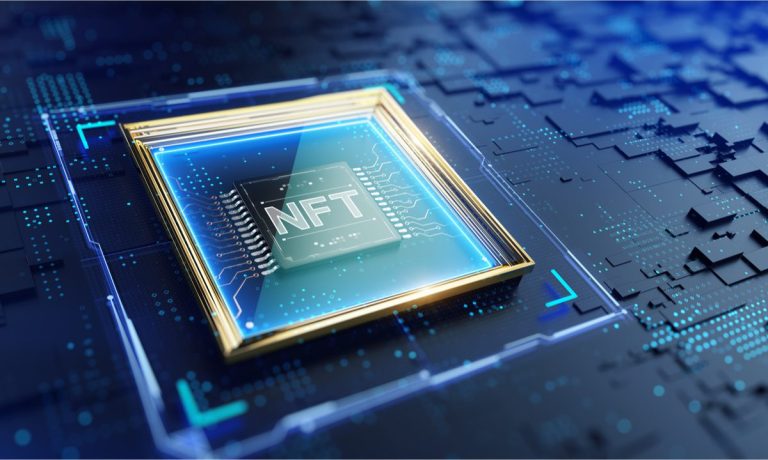
The latest example came two weeks ago, when a very sad non-fungible token (NFT) seller going by the name @DinoDealer revealed that instead of listing his extremely valuable Ether Rock on top NFT Marketplace OpenSea for 444 ether — about $1.2 million at the time — he accidently typed in 444 WEI, worth twelve one-thousandths of a penny.
A bot snapped it up almost instantly and, thanks to the permanent nature of blockchains, the sad answer to his question, “In one click my entire net worth of ~$1 million dollars, gone. Is there any hope?” was no.
How’s your week?
Mine? I just erroneously listed @etherrock #44 for 444 wei instead of 444 eth🤦♂️
Bot sniped it in the same block and trying to flip for 234 eth
In one click my entire net worth of ~$1 million dollars, gone
Is there any hope?
Am I GMI?
Can snipers show mercy? pic.twitter.com/yq9Itb2Ukb
— Rock dust 😭 (@dino_dealer) March 10, 2022
While this isn’t the only such mistake in the history of NFTs, it’s probably the costliest of its kind yet — and it points to a problem that’s been holding NFTS back as they dive into the mainstream. By and large, you’ve had to buy them with cryptocurrencies — generally ether.
That means — asides from getting a digital wallet needed to hold the NFT — the buyer has to start an exchange account, loading up funds from a bank account or credit card, and well, as the link below describes, it’s a process.
See also: PYMNTS DeFi Series: How to Buy an NFT in 19 Easy Steps
And as ether is at this writing $3,460.57, buying or selling one requires a lot of percentages: A $100 NFT would sell for 0.0289 ETH. Which isn’t exactly a consumer-friendly sticker price.
Which is why its noteworthy that on Thursday (March 31), OpenSea teamed up with credit card-to-crypto payments processor MoonPay, to make it possible to buy an NFT directly with a credit card, Apple Pay or Google Pay, avoiding the process of buying ether entirely.
Credit is Overdue
The market for NFTs — a type of cryptocurrency that can hold media like an image, video, song or even deeds and other documents — is simply expanding into the mainstream far too quickly to remain so crypto-centric.
While there’s still a lot of buzz around million-dollar CryptoPunk and Bored Ape Yacht Club collectables, the building hype around metaverses — where everything from “land” to avatars to fashion accessories like Nike sneakers are NFTs — is making a more recognizable currency necessary.
Read more: PYMNTS Metaverse Series: Warner Music Group Brings Venue, Theme Park to The Sandbox
Both Warner Music and Universal Music are buying metaverse land and teaming up with developers that can make NFT song and albums a reality — especially as the format could make piracy far harder. And in Decentraland’s recent Metaverse Fashion Week, designer Tommy Hilfiger was selling NFTs that came with a real product, arriving two to four weeks later.
On Thursday, OpenSea competitor Nifty Gateway, which already allows purchases using credit cards, announced a partnership with Samsung, which integrate an NFT marketplace into its smart TVs.
Saying its mission is to simplify “the way customers buy, sell, create, and hold NFTs while making … NFT purchasing more seamless than ever before,” Nifty Gateway founder Duncan Foster said in a release that the Samsung marketplace would accept debit and credit cards, as well as cryptocurrency.
In a recent interview about the Visa Creators Program, a mentorship initiative for artists, musicians and other creatives, the credit card giant’s head of crypto, Cuy Sheffield, told PYMNTS’ Karen Webster that one goal of the program — albeit a secondary one — is to make sure that “any of the experiences that these NFT creators want to build” can be purchased “with a Visa card — which marketplaces accept cards, how do we improve what that experience is.”
Mastercard is getting in on the action, announcing in January that it would classify NFTs as “digital goods” rather than cryptocurrencies, which can generally only be purchased with debit cards.
Also read: Mastercard, Coinbase Make It Easier to Buy NFTs
Raj Dhamodharan, executive VP of digital asset and blockchain products and partnerships at Mastercard, lauded the new ease of buying NFTs in his company’s blog post announcing the partnership.
“Today, if you want to buy an NFT — such as a digital art piece — you first need to open a crypto wallet, buy crypto, then use it to purchase an NFT in an online marketplace,” he said. “Cryptocurrency enthusiasts are used to this process. But for most people, it’s not simple, it’s not intuitive. We think it should be much easier. That will ensure NFTs can be for everyone.”